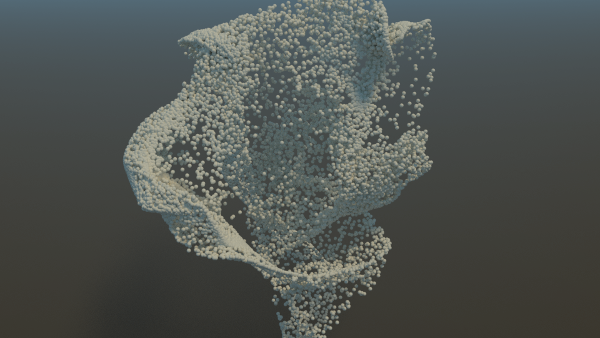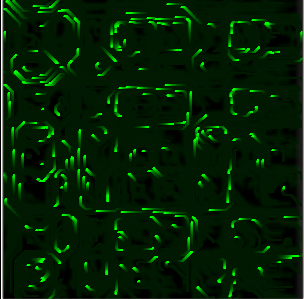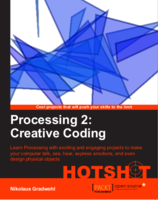blackfluid
For this animation I used some fluid particles and created a surface using the cubesurfer addon for blender
you can download the blend file here
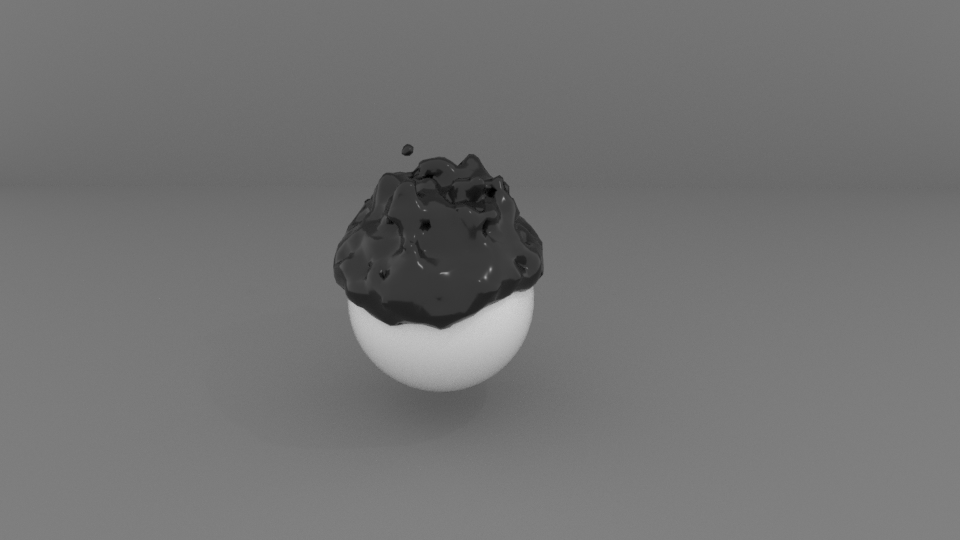
AN experiment - force field curl clusters
For this animation I used a particle system influenced by a curl field and used the animation nodes cluster template to create the network connections
you can download the blend file here
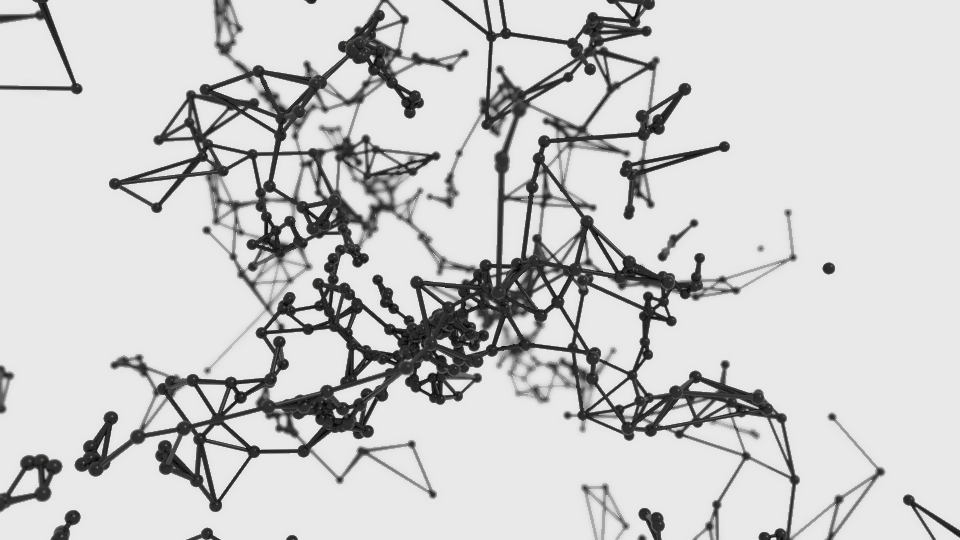
twisted torus particles
I used the twisted torus shape of the Extra Objects addon in blender as an emitter for a particle sytstem
you can download the blend file here
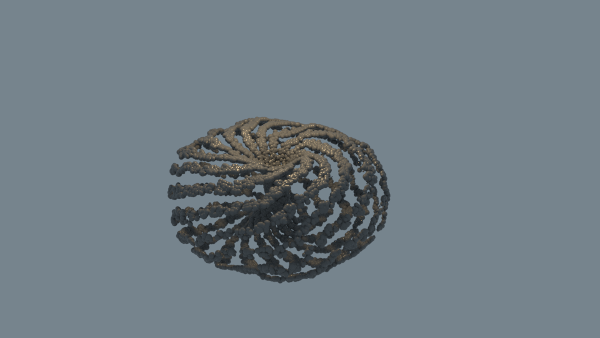
particle density volumetric material
I made a volumetric material in cycles based on particle density. The particle set I used is influenced by a turbulence force field. I used a small ico-sphere as a particle object and added an emission shader. I noticed a pretty noticable offset between the particles and the volume material that changes over time - I'm not sure yet where that offset comes from, but I think it still looks pretty.
you can download the blend file here
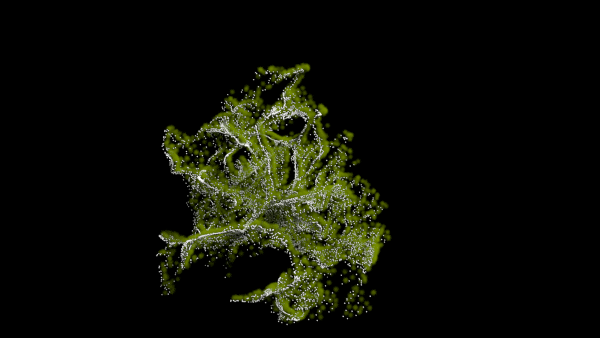
glowing plates
for this animation I wanted some glowing panels to light up in a random order. So I created a particle set and used the particle index and compared it to the current frame index using a "less than" Node. Based on that comparison I switch between a diffuse- and an emmision-Shader by using the result of the comparison as the mix factor.
you can download the blend file here
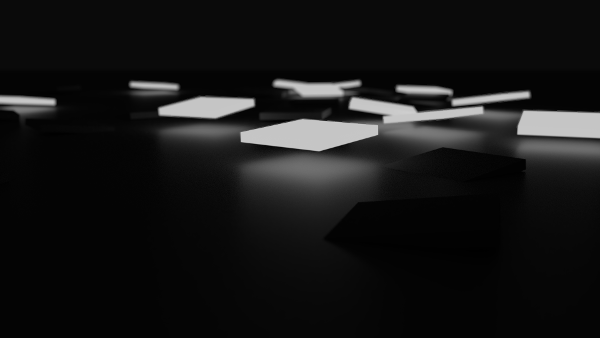
curl noise ring
For this animation I made a ico-sphere follow a circular path while emitting particles. The particles have gravity removed from the field weight and use no velocity vector. The only reason they move is a turbulence forcefield with a curl factor of 1
you can download the blend file here
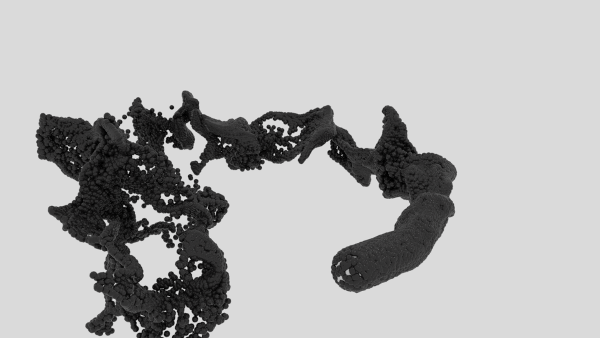
cuircuitboard noise pattern
I saw a hudini video tutorial a few weeks ago that shows how to use a noise field to create particle trails that look like electronic schematics. I really liked the effect and recreated it using a small processing script. To create the effect I set up some particles, that use a noisefield to influence their velocity. Before the velocity is added to the particles potion the vector is normalized and then each component is converted to an integer value - this limits the values to the x and y component to -1,0 and 1. The resulting vector is then scaled to the original length of the vector and added to the position of the particles.
click here to start the sketch or download the sourcecode.
read more ...flow field fluid
For this animation I created a particle simulation with fluid particles emitted from an icosphere. The particles are emitted along the y-axis and hit a forcefield, with the flow parameter set to 0.1. I used the cubesurfer addon by pytoevil to create a mesh from the particles.
you can download the blend file here
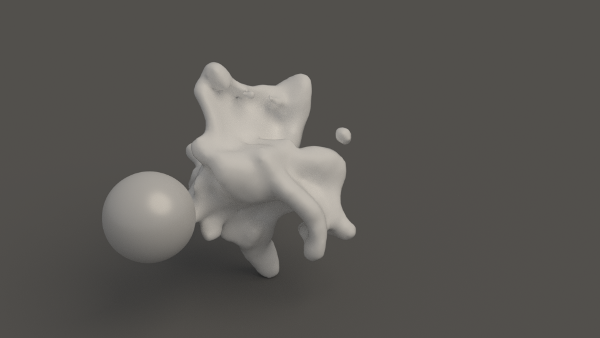
forcefield flow explode
I used the blender explode modifier to move the vertices of an icosphere in a turbulence forcefield in blender. The particles that move the vertices are form the same icosphere that acts as the emitter of the particles. If you do that make sure the particle system is the first modifier in the stack and that "use modifier stack" in the particle settings is NOT ticked. Otherwise this leads to pretty wired behaviour and probably a blender crash.
The forcefield has an increased flow parameter as with all my flow experiments.
To make the shards look like 3D objects instead of thin paperlike triangles I used the solidify modifier to give them a little bit of depth.
you can download the blend file here
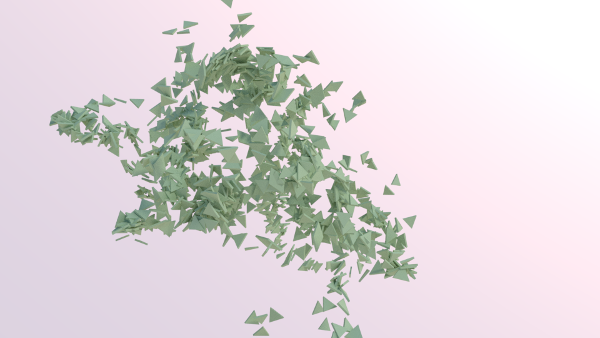
forcefield flow vortex
For this animation I combined a vortex forcefield and a turbulence force field. As with all my latest particle experiments I increased the flow parameter of the turbulence forcefield. The particles are emitted by the faces of an icosphere.
you can download the blend file here
